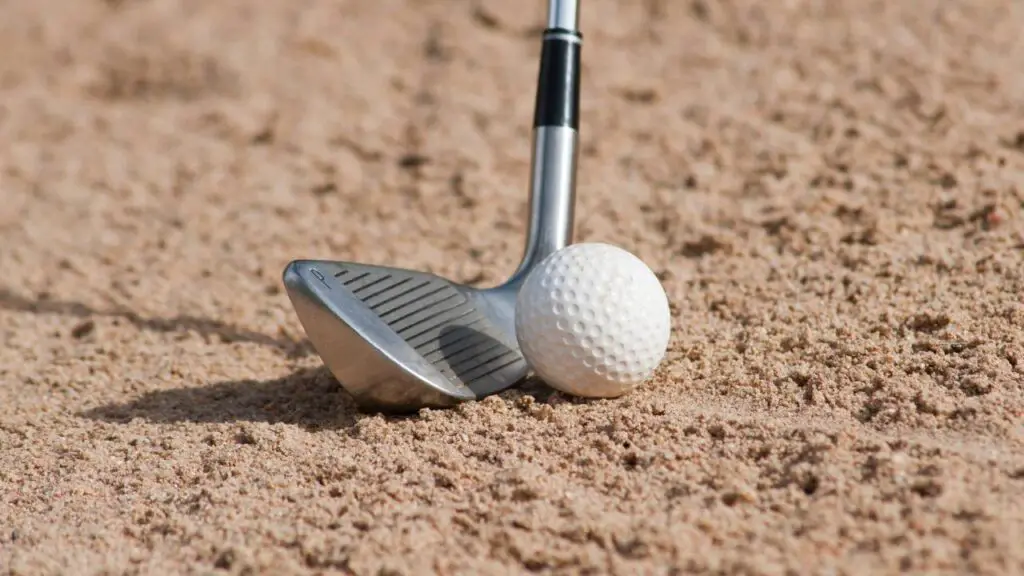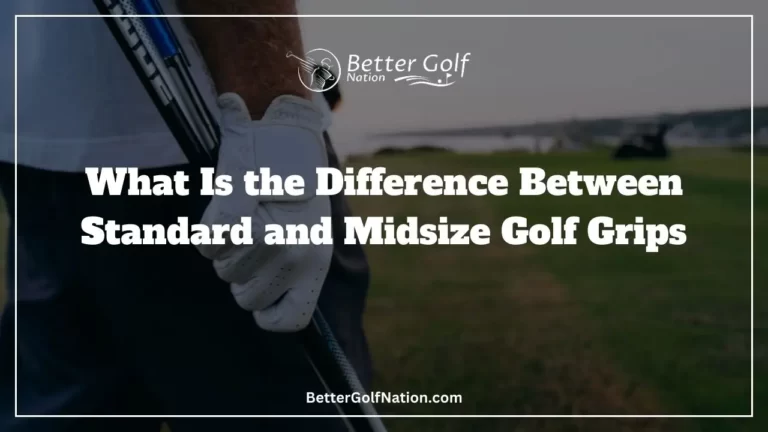The Art of Scoring: Understanding the Wedge in Golf
- Last updated on July 6, 2023
- Toni Benedito
- Golf Equipment & Gear, Blog
A wedge in golf is a club with high lofts and short shafts, designed for accurate short shots. Common types include sand wedges for bunker shots and pitching wedges for short approaches. Mastering wedge techniques enhances your game, making difficult shots seem effortless. Proper technique and practice are crucial for success.

Golf is a sport that requires precision and technique. It is a game of skill and strategy where every swing counts. Whether you are an avid golfer or just starting out, understanding the different types of clubs is essential to improving your game.
One type of club that is particularly important in golf is the wedge. Wedges are a subset of golf clubs that have high lofts and short shafts.
They are designed to help golfers hit short shots with accuracy and precision, making them an essential tool for any golfer’s bag. Wedges come in various types, such as the following:
- Sand Wedges
- Lob Wedges
- Gap Wedges
- Approach Wedges
- Pitching Wedges (PW)
- A-Wedges (also known as the gap or attack wedge)
The most frequently used wedges in golf are sand wedges (SW), which has a loft between 54 and 58 degrees and is used for bunker shots or getting out of tricky situations on the course, and the pitching wedge (PW), which has a loft angle between 44 and 48 degrees and is used for short approach shots from around 120 yards or less. Wedges may seem like simple clubs compared to other, more technically advanced golf clubs on the market today.
"They are designed to help golfers hit short shots with accuracy and precision, making them an essential tool for any golfer's bag."
However, they play an important role in helping players develop their skills on and off the course. Understanding what a wedge is in golf is crucial for any player who wants to improve their game.
Different types of wedges have different uses and purposes on the course; mastering these techniques with your wedge can take your game to new heights. Whether you’re hitting bunker shots with your sand wedge or trying to get close to the hole from short distances with your pitching wedge – having these tools at hand will make all those difficult shots seem effortless!
Understanding Golf Clubs
One of the most important aspects of golf is understanding the different types of clubs. Golf clubs are used to hit the golf ball in order to achieve different results.
There are many different types of golf clubs, each with its own unique features and purpose. Short-range shots are one of the most important shots in golf, and this is where wedges come into play.
The wedge is a type of golf club that has high loft angles and is designed to help players hit short-range shots with precision and accuracy. Wedges are used for approaching the green or hitting out of bunkers.
The loft height plays an important role when it comes to selecting a wedge for your game. The higher the loft angle, the more height you can add to your shot. High lofts are useful for short-range shots that require more elevation, like bunker shots or approach shots.
Each wedge type has its own characteristics that make them suitable for certain situations on the course. Pitching wedges have lower loft angles than other wedges, but they can be useful for longer approach shots, whereas lob wedges have very high lofts, which make them perfect for getting maximum elevation on short-range shots.
When selecting a wedge, it’s important to consider what type of shot you want to make as well as your swing style and ability level. Many professional golfers take time to learn about their preferred clubs so they can choose what works best for them.
A golfer’s choice in wedge selection depends largely on their swing style and preferences. By taking some golf lessons or trying out different wedges on the golf course, you can find the one that suits your game best.
Enjoying this article? Read more:

What is a Wedge in Golf?
A wedge is a type of golf club that is designed to hit high-lofted shots at a short distance. Wedges are generally used for delicate shots around the green, bunker shots, and pitching from the fairway. They are an essential part of any golfer’s arsenal and can greatly improve one’s game.
For example, the PW is used for approach shots to the green, while the SW is designed to get out of bunkers easily. The most common type of wedge is the pitching wedge, which typically has a loft angle between 44 and 48 degrees.
The pitching wedge can be used for full swings that require more distance or shorter swings around the green. Meanwhile, a gap wedge typically has a loft angle between 50 and 54 degrees and is often used to cover gaps in the distance left between other clubs.
"When selecting a wedge, it's important to consider what type of shot you want to make as well as your swing style and ability level. Many professional golfers take time to learn about their preferred clubs so they can choose what works best for them."
One should note that there are significant differences between wedges and other golf clubs, such as irons or drivers. Unlike, say, an iron club, which hits low trajectory shots, wedges have higher lofts, enabling them to lift balls off grass more easily.
And since they have shorter shafts than most clubs – about 34 inches on average – they also provide better control over direction. When selecting a wedge for golf, one must choose according to their needs rather than following trends alone; this includes factors such as skill level, playing conditions such as wind speed, or directionality on your local golf course, among others.
One could consult professional advice from experienced players or take golf lessons if necessary. Understanding what a wedge in golf entails will help improve your short game by improving your accuracy around greens, thus reducing the number of shots. Understanding the different types and how to use them is also crucial in selecting the right wedge for golf.
A good example is an A-wedge, which has become increasingly popular among golf enthusiasts since it was introduced by Stitch Golf. An A-wedge’s high loft and wide sole make it useful when playing bunker shots or any other situation where one needs to lift the ball quickly off a surface.

Types of Wedges in Golf
When it comes to golf clubs, wedges are the most versatile ones that you can have in your bag. They are designed for short shots and help you get out of tough situations on the course.
There are three types of wedges in golf. Let’s take a closer look at each one:
- Pitching Wedge (PW)
- Gap Wedge (GW)
- Lob Wedge (LW)
Pitching Wedge
The pitching wedge is the most common wedge, and it typically comes with a loft angle between 44 and 48 degrees. It is perfect for approach shots from about 100 yards to the green. It is also great for chipping around the green when you need some height on your shot. The PW is also used for bunker shots when you need to hit a high, soft shot that lands softly on the green.
Gap Wedge
The gap wedge, also known as an approach wedge or A-wedge, has a loft angle between 50 and 54 degrees. It fills the gap between your PW and LW and helps you make shorter approach shots from about 80-100 yards away from the green. You can also use an a-wedge for chipping around the green when there isn’t much space to work with.
Lob Wedge
We have lob wedges that come in with loft angles between 58 and 64 degrees! These clubs have a very steep angle of attack, which makes them ideal for hitting high shots with lots of spin. As their name suggests, they are perfect for getting out of bunkers or other tricky spots where you need to hit a high shot over an obstacle or onto an elevated green.
Each type of wedge has its strengths and weaknesses, depending on what kind of shot you need to make on the golf course. Having all three types in your golf bag along with other clubs such as irons and woods will help improve your game tremendously!
Don’t forget to practice with each one to find out which type of wedge you’re most comfortable using.
How to Use a Wedge in Golf
Using a wedge in golf is an essential skill that every golfer must master. A wedge is designed to get the ball up in the air quickly and land it softly on the green. There are different types of wedges, and each one serves a specific purpose. When using a wedge, it’s important to have the right golf stance.
Your feet should be shoulder-width apart, and your knees should be slightly bent to provide stability during your swing. You should also adjust your grip according to the type of wedge you’re using.
For example, if you’re using a pitching wedge (PW), you should use a full grip with both hands. Another crucial aspect of using a wedge in golf is choosing the right club for the shot. Wedge selection depends on different factors, such as distance from the hole, the lie of the ball, and the shot trajectory needed.
Additionally, there are also approach wedges (AW) and lob wedges (LW). Pitching wedges (PW) are typically used for shots that require more distance but still need loft height to reach or stay on greens.
"Your feet should be shoulder-width apart, and your knees should be slightly bent to provide stability during your swing. You should also adjust your grip according to the type of wedge you're using."
Gap wedges are useful for filling gaps between club distances by providing moderate loft height and distance control between irons or other clubs in your bag.
The Sand Wedge’s name explains its purpose: getting out of sand traps effectively with high loft height.
One thing that sets apart a wedge from other golf clubs is its high degree of loft height, which makes it ideal for hitting bunker shots or getting out of tricky situations where precision counts more than power. Mastering how to use a wedge in golf can improve your game significantly – as long as you know how to use them correctly!
Choosing an appropriate type according to what the shot needs can be challenging but ultimately rewarding when executed correctly. Remember, practice makes perfect!

Difference Between a Wedge and Other Golf Clubs
When it comes to golf clubs, there’s a lot to learn. One aspect that can be a bit confusing for beginners is understanding the difference between a wedge and other golf clubs.
While all clubs have their specific uses, wedges are unique in their design and purpose. First and foremost, wedges are designed for short-distance shots.
They’re typically used when players are close to the green or need to get out of tricky situations like bunkers or rough terrain. In contrast, other golf clubs, like drivers or woods, are designed for longer shots and distance. Another key difference between wedges and other golf clubs is the loft angle. Wedges have a higher loft angle, which means the face of the club is angled more upward.
This allows players to get more height on their shots, which can be helpful in specific situations like getting over obstacles or onto elevated greens. Additionally, wedges often have a special type of grip that differs from other golf clubs.
"While all clubs have their specific uses, wedges are unique in their design and purpose. First and foremost, wedges are designed for short-distance shots."
Golfers may use different grips depending on the situation they’re in, but when it comes to using a wedge in golf, many players will use what’s called an open grip. This involves placing your top hand slightly further down the club than your bottom hand, which helps create more loft on your shot.
While all golf clubs require some level of strategy when it comes to using them effectively, using a wedge in golf often requires even more precision and technique due to their specialized uses. Hitting bunker shots with a wedge requires understanding how much sand you need to displace with your shot so that you can get enough height on your shot without overshooting your target.
While all golf clubs serve their purposes on the course, understanding the difference between a wedge and other types of clubs is crucial if you want to improve your game. Whether you’re using an approach wedge, lob wedge, or gap wedge, knowing when and how to use each type of wedge can help lower your golf handicap and improve your golf techniques.
Choosing the Right Wedge for Your Game
Choosing the right wedge is an important aspect of any golfer’s game. With so many options available in today’s golf market, it can be a bit overwhelming to select the best wedge for your specific needs.
With some basic knowledge of golf club type and technique, selecting the right wedge can be a relatively easy process. When choosing a wedge, the first thing to consider is what type of short-range shots you will be playing.
Each wedge has its own unique specifications that make it ideal for different types of shots. For example, sand wedges are designed specifically for bunker shots and soft sand conditions.
Alternatively, approach wedges are typically used for full swings from around 100 yards out. Another thing to consider when selecting a wedge is your overall golf handicap.
If you are just starting out or have a high handicap, a more forgiving wedge such as TaylorMade Golf’s Hi-Toe may be an ideal choice due to its wide sole and increased spin control. However, if you have an established handicap and prefer more control over your short-range shots, then Stitch Golf’s Tour-Level wedges may be a better option.
It is important to consider the loft angle when selecting a wedge. Different wedges have different lofts, which directly impact trajectory and distance control on approach shots.
Typically, higher-lofted wedges such as an approach wedge or lob wedge (60 degrees or higher) are used for short-range shots where precision and accuracy are paramount.
They may offer deeper insights into specific details about each kind of club that isn’t immediately obvious but could make a huge difference in helping you make the right choice. Overall, selecting the right wedge for your game is a highly personal decision that depends on your ability level, golf techniques, and specific needs for short-range shots.

Conclusion
The wedge is a crucial part of any golfer’s arsenal. It is a versatile club that can be used for a variety of short-range shots on the golf course. You now have a better understanding of what a wedge is in golf and the different types available to you.
Remember, using a wedge in golf requires proper technique and practice and if you’re struggling with your short game, consider taking some golf lessons or working on your golf swing to improve your accuracy and control.
When selecting the right wedge for your game, it’s important to consider the loft angle and bounce angle. These factors will impact how the ball behaves when struck by the club.
Be sure to test out different wedges on the practice green before making a final decision. Ultimately, whether you prefer using a sand wedge, pitching wedge, approach wedge, or lob wedge, finding the right fit for your game will greatly improve your scores on the golf course.
So go out there with confidence and take advantage of all that TaylorMade Golf or other brands have to offer in terms of high-quality wedges designed for precision shots. With proper technique and strategy, you can effectively use wedges in golf to elevate your gameplay!
FAQs
Wedges are crucial for precise short shots, allowing players to lift the ball with accuracy and control.
A pitching wedge has a loft of around 45-50 degrees and is used for shots from 100-130 yards. A sand wedge (SW) has a loft between 54-58 degrees and is designed for bunker shots and getting out of trouble around the green.
Choose wedges based on your needs and playing style. Start with a pitching wedge, sand wedge, and possibly a gap or lob wedge. Add more specialized wedges as you improve.
Golf wedges are used for chip shots, bunker shots, pitch shots, and full approach shots from distances within approximately 130 yards.
Practice different wedge shots at different distances, take lessons to learn essential techniques, and focus on proper stance, grip, and swing mechanics. Wedges are crucial for a golfer’s game.
A wedge with a loft angle of 52 degrees is often called a gap wedge (GW) or approach wedge (AW).
While the swing technique shares similarities, hitting a wedge requires adjustments for shorter shots and increased control.
Typically, tees are not used when hitting shots with a wedge, as they are primarily for driving shots.
Position the ball slightly back in your stance, maintain a relaxed grip, and focus on crisp contact for optimal wedge shots.
Generally, full swings with a wedge are not necessary. Employ partial swings and focus on distance control and accuracy.
Share this Post
Toni Benedito
Keep Reading
Follow Us
Recent Posts

The Shocking Cost: How Much Does It Cost to Fly with Golf Clubs?
Flying with golf clubs can be a hassle, but it’s worth it for avid golfers. Costs vary by airline, ranging from $30 to $150 per way. Southwest Airlines offers a generous policy, allowing one set

Why Do Golfers Tape Their Fingers Before Hitting the Course?
Golfers tape their fingers to prevent injuries from repetitive motions, provide support for existing injuries, and improve grip comfort. It’s a popular technique among amateurs and pros alike, offering a lightweight and effective solution compared

How Much Does a Round of Golf Cost? Are You on Par?
The cost of a round of golf varies widely based on factors like course type, location, and time of play. Public courses typically range from $30-$100 per round, while exclusive ones like Augusta National or

Hidden Fees: How Much Does It Cost To Rent a Golf Cart
Wondering how much it costs to rent a golf cart? Explore factors like location, rental duration, and cart type impacting prices. Daily rates range from $50 to $80, while weekly rentals can vary from $200

How Much Does a Golf Bag Weigh? The Ultimate Guide
Golf bag weight varies depending on type and materials, ranging from 2 to 70 pounds. Factors include stand bags for carrying, cart bags for carts, and tour bags for professionals. Consider bag weight for game

Hitting Driver Too High? How to Fix It for Lower Flight!
Discover why hitting the driver too high affects your golf game. Learn how swing mechanics, setup adjustments, and proper equipment can help you hit longer and more accurate drives. Key Takeaways Improving swing mechanics through
Table of Contents








